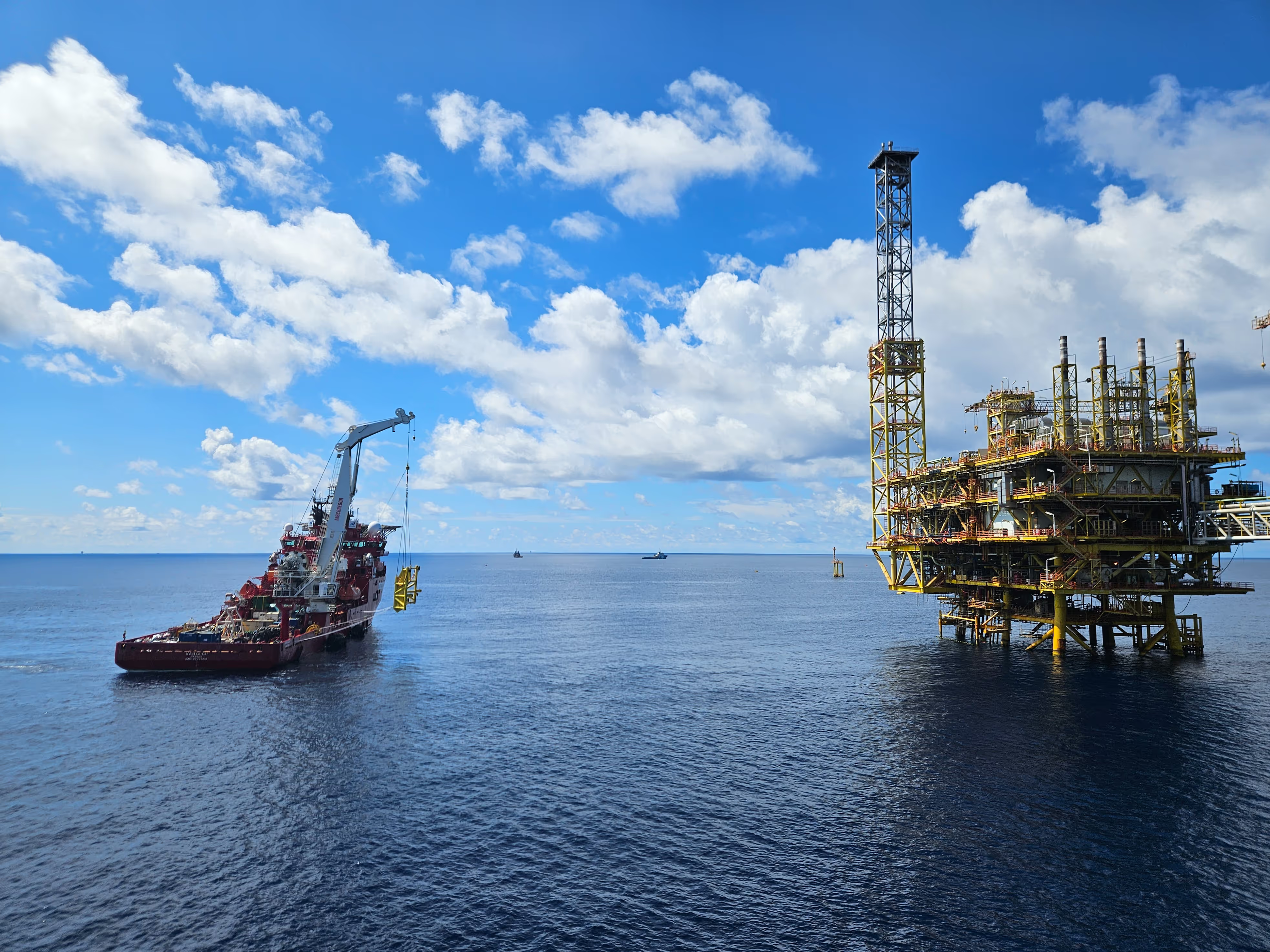
Many flare tips are still replaced by helicopters. A Norwegian contractor has gained a significant market share with this service.
Also known as ‘aerial cranes’ or ‘sky cranes,’ lifting helicopters are typically operated by two pilots. For flare tip replacements, they are accompanied by two mechanics acting as loadmasters or signallers.
The aircraft load capacities range from 500 kg (Bell 206 B) to 4000 kg (Super Puma AS332). The pilots use the ‘long-line’ flying technique, which allows the pilot to fly while looking down through a Plexiglas viewing bubble.
Disadvantages of Helicopter Flare Tip Replacement
The industry is reluctant to choose helicopter flare tip replacement due to its many disadvantages, including:
- The mechanics need to position themselves on the flare tip access platform to connect the load and guide the helicopter pilot. The platform is small, and there are no rapid-escape possibilities if the load starts to swing.
- The pilot usually cannot see where the hook is from the cockpit — even with plexiglass side bubbles or removable doors. The pilot must rely on the signaller’s communication to maneuver into position.
- Hovering with a load is difficult, fatiguing, and potentially dangerous. It requires a high level of pilot concentration and should therefore be limited in time.
- In dangerous situations, the pilot may choose to release the load. For this purpose, the aircrew has a remote electric hook release and access to a manual release at the aircraft end of the load line. The load will be irretrievably lost in the sea.
- Rotor downwash causes strong gusts, turning dust, dirt, and loose objects into airborne projectiles.
- The helicopter needs a take-off and landing area. This will probably be the platform’s helideck if the worksite is far offshore. For the duration of this risky offshore operation, the helideck cannot be used for other helicopter operations.
- Helicopter lifting operations are very expensive.
Advantages of Mechanical Flare Tip Replacement
Conbit’s mechanical flare tip replacement method is more reliable and safer than a helicopter. Although the required shutdown time may be one or sometimes two days longer, the downtime is known in advance and certain.
Bringing in mechanical handling tools is much easier than deploying a suitable helicopter. Also, risks are better controlled because the mechanical flare tip replacement method consists of a series of small, easily manageable steps.
As many people in the industry prefer mechanical handling methods, it is easy to convince management to choose this better and safer solution. The required team is smaller than in the case of helicopter flare-tip replacement.
Many clients prefer to use the mechanical flare-tip replacement method for these reasons.
Check Conbit’s successful offshore flare tip replacement projects below:
Offshore flare tip replacement Malampaya
Offshore flare tip replacement ANOA
Offshore flare tip replacement Bongkot North
Related Cases
Related Services
Lifeboat Davit Installation Services
Living Quarter Installation Services
Caisson Replacement Services
Crane Replacement Services
Flare Tip Replacement Services
Inspections
Modification
Maintenance
Installation
Decommissioning
Contact
We're here to answer your questions
You can contact us by phone or email. We’re looking forward to your questions!


.png)
-1.avif)





